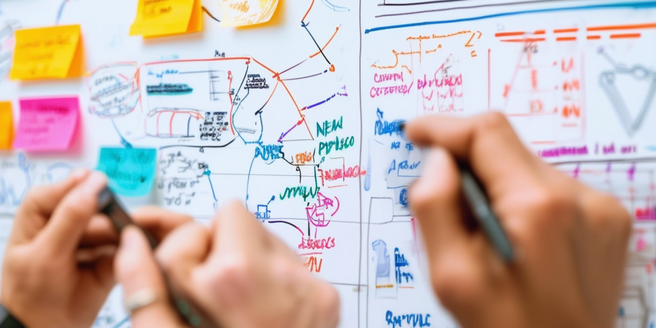
Understanding the Foundation of Effective Collaborations
Building successful collaborations requires a strong foundation centered on mutual understanding. The key is recognizing and respecting each partner’s values and expertise, creating a balanced platform of give and take. By valuing each other’s contributions, teams can bridge gaps and foster environments conducive to innovation. Setting clear objectives and understanding each party’s strengths and weaknesses lead to tailored strategies that leverage collective strengths. This foundation is further strengthened by aligning on shared visions and establishing flexible yet clear roles and responsibilities. Periodic evaluations and open dialogue are necessary to reassess alignment and adjust strategies as needed. Ultimately, the bedrock of successful collaborations lies in a deep-rooted commitment to shared objectives and a harmonious synergy, facilitating a seamless workflow that drives mutual success and long-term sustainability.
Identifying Common Goals and Objectives
The success of any collaboration hinges on clearly identified and mutually agreed-upon goals. The first step in establishing these is to openly communicate and explore each party’s objectives and desired outcomes. Drawing parallels between these goals helps to create a unified vision that all stakeholders can rally around. Documenting these common goals ensures clarity and creates an anchor point for all activities and decisions. Regular review meetings should be held to track progress toward these objectives, allowing for adjustments based on new insights or changing conditions. A roadmap with shared milestones can guide efforts and keep everyone on track. Addressing conflicts early and aligning on prioritization enhances focus and commitment from all involved. The identification and alignment of common goals foster a strategic partnership oriented towards success.
Establishing Clear Communication Channels
Effective collaboration is underpinned by clear and efficient communication channels. These channels facilitate the exchange of ideas, feedback, and progress updates, ensuring that everyone is aligned and informed. Establishing preferred methods of communication, be it through email, instant messaging, or scheduled meetings, sets expectations and reduces potential miscommunications. Regular check-ins and updates help maintain momentum and address issues promptly. Transparency in communication builds trust and creates an environment where team members feel valued and heard. It’s essential to adapt communication styles to the needs of diverse team members and to incorporate tools that aid in collaborative efforts, such as shared digital workspaces or project management software. Ensuring all voices are heard and understood is crucial in maintaining a cohesive team dynamic.
Fostering Trust and Mutual Respect
Trust and mutual respect are fundamental to any successful collaboration. Without these elements, partnerships are likely to encounter breakdowns in communication and cooperation. Trust is built over time through consistency, reliability, and transparency. Regularly demonstrating integrity and competence builds confidence among collaborators. Mutual respect involves appreciating diverse perspectives and valuing each individual’s contributions. This is achieved by encouraging open dialogue, actively listening, and providing constructive feedback. Teams thrive in environments where members feel respected and valued, leading to higher engagement and innovative thinking. It is vital to address misunderstandings swiftly to prevent erosion of trust. Establishing a culture that celebrates achievements and recognizes individual efforts nurtures a positive atmosphere. Trust and mutual respect are not static; they require ongoing commitment and cultivation for long-term collaboration success.
Evaluating and Refining Collaborative Efforts
Continuous evaluation and refinement of collaborative efforts ensure sustainability and effectiveness over time. Regularly reviewing the outcomes and processes allows teams to identify successes, as well as areas for improvement. Feedback from all stakeholders is crucial in this evaluative process to gain a comprehensive understanding of what is working and what is not. Data-driven insights and reflective practices guide these assessments, helping to fine-tune approaches and strategies. Flexibility is imperative as collaboration dynamics and external conditions evolve. Celebrating achievements while maintaining a discerning outlook towards setbacks fosters an adaptive learning environment. Implementing iterative improvements and recognizing the need for pivoting when necessary keeps the collaboration relevant and productive. A systematic approach to evaluation ensures that collaborative ventures continue to meet objectives and deliver value to all parties involved.
